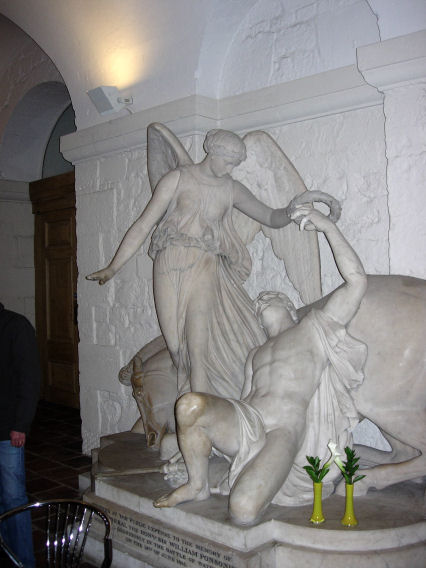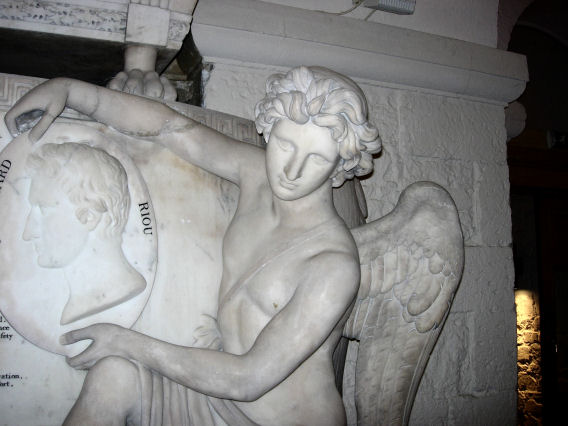Radio does not employ enough terms for discussing itself
| Our vocabulary strains at detailing and discussing all the sound events and their activity. Our present list of available terms only gets to a small percentage of what comes in to our ears. |
| Sound takes a back seat to film in this. Reviews of films can use some complicated terms. It's urgent that sound catches up! THE EYES HAVE IT! |
| We are in constant contact with the SOUND WORLD - we are surrounded by it. We are held back by our lack of sensitivity to sound. We have to be more inquisitive about sound and talk more about it. |
| Academic study of sound has not got to the stage yet of fully mapping the area. There is not enough of a disciplinary focus across academic institutions. See the 'RADIO DRAMA BIBLIOGRAPHY' for some marvellous contributions to sound and its vocabulary at http://www.savoyhill.co.uk/technique/radiodramabibliography.html |
| The the visual is prioritized in everyday experience. See 'Oculocentrism or ocularocentrism - dominance of seeing in our senses' at http://www.savoyhill.co.uk/technique/oculocentrism%20.html |
| There are dangers in visually-based theoretical terms. See 'Oculocentrism or ocularocentrism - dominance of seeing in our senses' at http://www.savoyhill.co.uk/technique/oculocentrism%20.html |
| See 'Listening - how people listen' at http://www.savoyhill.co.uk/technique/listening.html |
| Academic (theoretical) terms belong to only one possible system and this operates ONLY on its own terms. See 'Radio theory - what is it for?' at http://www.savoyhill.co.uk/technique/radiotheorywhatisitfor.html and 'Theory - what is it?' at http://www.savoyhill.co.uk/technique/theory.html |

Alan Beck's discussion of this
SOURCE:
Beck, Alan, 2000, 'Playing by ear: new ways of teaching and researching
radio drama', Studies in Theatre and Performance online, December 2000,
electronic publication,
http://www.ukc.ac.uk/sdfva/stp/index.html
3.3 Extending the vocabulary
Radio, overall, is still under-theorised (Lewis and Booth, 1989, xii-xiii
and 3), and needs to draw on other disciplines, film especially in my opinion.
I describe film as 'radio drama's significant other'. My preference among
the all-too-few current theorists in film sound is for Michel Chion (Chion
1994; Crook, 1999, 70, 81-9), Edward Brannigan, Murray Smith and Gianluca
Sergi. (A reading list is available on the Radio Theory site.) Many radio
drama listeners have their aural skills refined in the cinema, as I outlined
above.
Further, as I touched on above, radio has not a descriptive, critical, artistic and theoretical vocabulary as evolved and precise for its many tasks as we would wish it. The complaint goes back to Arnheim, 1936, 17. Sergi 1998 starts his study of film sound with a regret about 'the lack of a proper vocabulary with which to articulate the complexity of the subject' (156). Elissa Guralnick explains that in her study of Beckett, Stoppard, Pinter, etc., '[I] have made little mention of so-called production values - sound effects, background music, electronic filters for noises and voices, and the like' (Guralnick, 1996, xi).
Radio itself was never part of that 1980s theoretical explosion which drove
film, for example, into work on subject and object. Crook's chapter, 'Sound
design vocabulary', gives an effective collection to date, with commentary
(Crook, 1999, 70-89). I introduce or adapt some terms myself, given in
the Glossary.
Examples are the 'extra-radio world' corresponding to film's 'profilmic
event' or 'profilmic object', that is, the world out there at which the
microphone points. Also there is the radio 'mise en scène', well-known
in theatre scenography and even more widely applied in film studies (Beck,
2000, 'Mise en scène'). I transpose from film theory the term 'suturing
devices'. Their purpose is to 'stitch in' or 'bind in' and position the
listener. They make up for radio's 'absence' (Crisell, 1994, 56). I hope
these terms will be found meaningful in future work but the aim must be
overall, to produce on the page, as detailed an analysis of key radio play
scenes as one finds in film studies.
SEE http://www.savoyhill.co.uk/technique/radiodramabibliography.html
for bibliography.
SEE GLOSSARY FOR THIS ARTICLE at http://www.kent.ac.uk/sdfva/stp/index.html
SEE ALSO the GLOSSARY for the 'RADIO DRAMA DIRECTING SITE' at http://www.savoyhill.co.uk/technique/glossary.html

See also Thomas Leitch, 'Twelve fallacies in contemporary adaptation
theory', Criticism, Spring, 2003
http://www.findarticles.com/p/articles/mi_m2220/is_2_45/ai_n6143332/pg_1